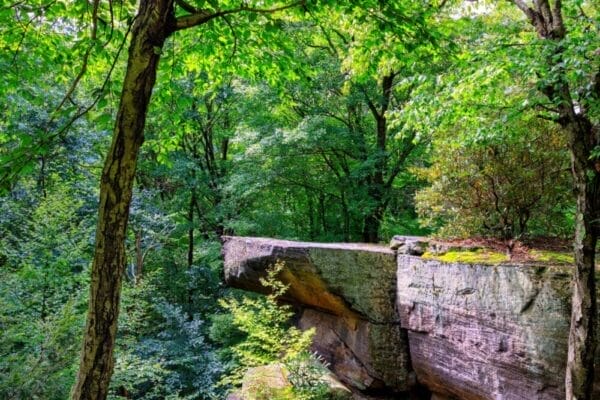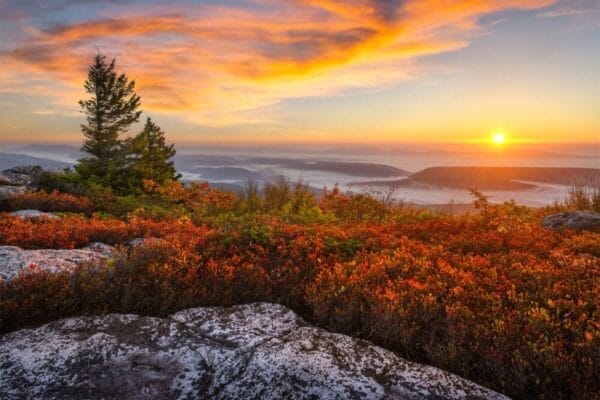Preparing for Unpredictable WV Weather: Summer Storm Safety for Outdoor Adventurers
West Virginia’s summers offer a perfect backdrop for outdoor adventures, from hiking the Appalachian Trail to kayaking the New River. However, the Mountain State’s weather can be as wild as its landscapes, with sudden storms that can catch even experienced outdoors people off guard. This comprehensive guide will help you stay safe while enjoying all that West Virginia has to offer, even when summer storms roll in.
1. Stay Informed
- Check weather forecasts before heading out, paying special attention to severe weather alerts
- Use reliable weather apps with real-time updates, such as NOAA Weather Radar or AccuWeather
- Be aware of severe weather warnings for your specific area in West Virginia
- Consider investing in a portable weather radio for areas with poor cell reception
2. Recognize Warning Signs
- Watch for darkening skies, especially to the west, and listen for distant rumbles of thunder
- Be alert to sudden drops in temperature, which often precede storms
- Pay attention to increasing wind speeds or abrupt changes in wind direction
- Look out for approaching dark, low-lying clouds
3. Plan Your Route
- Study your trail map and know the terrain, identifying potential natural shelters like caves or dense forest areas
- Avoid high, exposed areas such as ridgelines or open fields during storms
- Plan alternative routes or exit strategies, particularly for longer hikes or backpacking trips
- Familiarize yourself with nearby towns or ranger stations where you could seek help if needed
4. Pack Essential Gear
- Waterproof jacket and pants – lightweight, breathable options are best for summer
Emergency shelter such as a lightweight tarp, bivy sack, or compact tent - Headlamp or flashlight with extra batteries – crucial if you’re caught out after dark
- Extra layers of clothing, including a warm, non-cotton layer in case temperatures drop
- Waterproof bags or dry sacks to keep essential items like food and electronics dry
5. Lightning Safety
- Follow the 30-30 rule: If thunder follows lightning within 30 seconds, seek shelter immediately. Wait 30 minutes after you hear the last thunder before resuming outdoor activities.
- If caught in the open, avoid being the tallest object. Stay away from isolated trees, poles, or rocky outcrops.
- If in a group, spread out to reduce the risk of multiple casualties
- Stay away from water bodies, wet items, and metal objects during storms
- If you feel your hair stand on end or skin tingle, lightning may be about to strike. Crouch down on the balls of your feet, keeping only minimal contact with the ground.
6. Flash Flood Awareness
- Be especially cautious near streams and rivers, particularly in narrow canyons or gorges
- Remember that in West Virginia’s mountainous terrain, flash floods can occur with little warning
- Move to higher ground immediately if water levels rise rapidly or if you hear a roaring sound upstream
- Never attempt to cross flooded areas, either on foot or in a vehicle – as little as six inches of fast-moving water can knock you off your feet
7. Communication and Emergency Preparedness
- Carry a fully charged phone in a waterproof case
- Bring a portable battery pack or solar charger for extended trips
- Leave a detailed itinerary with a trusted person, including your planned route and expected return time
- Consider carrying a satellite communicator for remote areas with no cell service
8. First Aid and Survival Skills
- Carry a first aid kit and know how to use it
- Learn and practice basic first aid and CPR before your trip
- Practice building emergency shelters using both gear you carry and natural materials
- Know how to purify water, as storms can contaminate water sources
9. Specific West Virginia Considerations
- Be aware that the state’s varied elevation can cause weather to change rapidly as you ascend or descend
- In popular areas like the New River Gorge or Monongahela National Forest, know the locations of ranger stations or visitor centers
- Understand that cell phone coverage can be spotty in many of West Virginia’s wilderness areas
- Familiarize yourself with the types of wildlife you might encounter during a storm, such as black bears or venomous snakes seeking shelter
While summer storms can add an element of risk to outdoor activities, proper preparation allows you to safely enjoy West Virginia’s natural wonders. Remember, your safety should always be your top priority – don’t hesitate to postpone or cancel plans if severe weather is in the forecast.
By staying alert, being prepared, and making smart decisions, you can navigate unexpected weather and continue to explore the beauty of Wild, Wonderful West Virginia. Happy trails, and stay safe out there!











